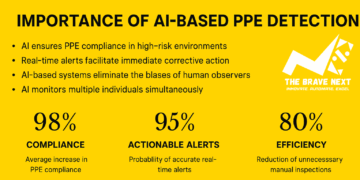In a time when cyber threats are growing more advanced and persistent, one of the most effective ways to protect your organization is to invest in security awareness training. As we step into 2025, traditional training models are no longer enough. Businesses need modern, engaging, and continuous approaches that empower employees to become a strong first line of defense.
At Anagram Security, we specialize in delivering innovative cybersecurity training tailored to today’s evolving threat landscape. In this blog, we explore the top best practices for security awareness training in 2025, helping your organization stay protected and proactive.
Why Security Awareness Training Still Matters
Even with the best firewalls and detection systems in place, human error remains the leading cause of data breaches. Employees unknowingly clicking on phishing links, reusing passwords, or failing to report suspicious activity can result in massive financial and reputational damage.
Security awareness training helps bridge this gap by educating your workforce on:
- Recognizing social engineering and phishing attempts
- Following secure password and device practices
- Reporting security incidents properly
- Understanding company policies around data handling and compliance
But the way this training is delivered is key — and in 2025, it’s all about relevance, repetition, and results.
1. Make Training Continuous, Not One-Time
Gone are the days when once-a-year training was sufficient. Cyber threats evolve daily, and so should your training program. Adopt a continuous learning model where employees regularly receive short, digestible training modules, real-time alerts, and refresher courses.
Pro Tip:
Implement monthly micro-learning sessions and simulated phishing campaigns to reinforce knowledge without overwhelming your team.
2. Use Real-World Scenarios and Role-Based Training
Generic training isn’t effective. Instead, tailor your content based on roles, departments, and likely threat vectors. For example:
- Finance teams should be trained on invoice fraud and BEC scams.
- HR departments need to understand data privacy and social engineering tactics.
- Developers should know about secure coding practices and insider threats.
Make scenarios realistic and industry-relevant so employees can immediately apply what they learn.
3. Gamify the Learning Experience
Gamification is one of the most effective trends in cybersecurity education. Turning learning into a game increases engagement, retention, and participation rates.
You can include:
- Quizzes with rewards or leaderboards
- Interactive simulations of phishing attacks
- Team-based security challenges
- Badge systems for completed modules
Anagram Security’s platform offers built-in gamification features to make cybersecurity training both fun and impactful.
4. Use Simulated Phishing Attacks
Phishing remains one of the most common attack methods. Regular simulated phishing tests help you evaluate how employees respond to threats and identify gaps in knowledge.
In 2025, simulations should be:
- Automated and customizable
- Aligned with current phishing trends (AI-generated emails, QR phishing, deepfake voice scams)
- Followed by instant feedback and just-in-time training
Track metrics like click rates, reporting rates, and completion to improve training effectiveness.
5. Focus on Behavioral Change, Not Just Awareness
Awareness isn’t the end goal — behavior change is. It’s not enough that employees know the risks; they must consistently apply security practices in real-world settings.
To do this:
- Reinforce training with regular communications (newsletters, security tips)
- Provide positive reinforcement and recognition
- Make it easy to report threats (e.g., one-click phishing report buttons)
Culture change takes time, but with the right approach, security can become a shared responsibility across your entire organization.
6. Track Performance with Data and Metrics
You can’t improve what you don’t measure. Leverage analytics to track:
- Training completion rates
- Phishing simulation results
- Incident reports submitted by employees
- Risk levels by department or location
At Anagram Security, we offer custom dashboards and reports that provide visibility into your security awareness efforts — helping you make data-driven decisions and demonstrate compliance.
7. Stay Compliant with Regulatory Standards
With increasing global regulations like GDPR, HIPAA, and India’s DPDP Act, regular security training is not just a best practice — it’s often a legal requirement.
Ensure your training:
- Covers compliance-specific topics
- Is documented and timestamped
- Includes signed acknowledgments or quizzes to verify understanding
Anagram Security’s compliance-ready modules make it simple to meet industry standards while keeping your workforce secure.
8. Partner with a Trusted Training Provider
Managing security training in-house can be overwhelming. A specialized provider like Anagram Security brings expertise, pre-built content, automated delivery, and continuous updates based on emerging threats.
Our customizable learning paths, simulated attack tools, and multilingual support make it easier than ever to roll out an effective, global security awareness program.
As we navigate 2025, security awareness training is no longer optional — it’s a critical pillar of your cybersecurity strategy. By following best practices like continuous learning, role-based scenarios, gamification, and data-driven tracking, your organization can build a resilient and security-conscious culture.


















